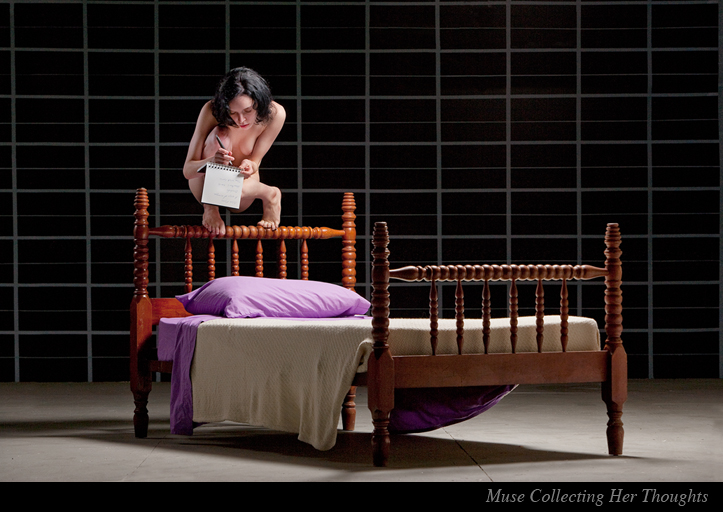Reflections on a Roosting Muse
A muse, as most people commonly think of one, is a person who inspires creativity in an artist. Muses are stereotypically women. Many artists of legendary stature, including Pablo Picasso, Alfred Stieglitz and Edward Weston, abandoned all other responsibilities in pursuit of their muse.
But the word “muse” already had a long history before it came to be associated with an inspiring temptress. Scholars in the Renaissance recognized nine Muses. Each of these nine spirits nurtured a particular discipline, ranging from poetry to music to dance, and even to astronomy. Before them, the Greeks identified three Muses. One represented the spirit of voice, another the spirit of practice, and the third represented the spirit of memory.
Early Greeks considered Muses to be the source of knowledge. At that time, knowledge was shared mostly through oral repetition. A host of individual performers recited poetry and songs that they had only heard. They passed on lyrics from one community to another, and from one generation to the next. If a story were to be properly retold, it was essential that the lyrics be properly remembered. Accurate recollection was critical, and the Greeks believed that their Muses were daughters of the goddess of memory.
To this day, both knowledge and memory play an important role in the artist-muse relationship, although not quite in the same way. Today we mortals share information much more easily, and we can archive what we share. The longevity of a creative work need not be an issue. Also, we receive the gifts of a single muse, rather than those from a set of three or nine. But, in other ways, the artist-muse relationship remains unchanged. Care must still be taken to hear when the muse beckons, for she still speaks with a soft, quiet voice.
Many artists find that the muse speaks to them through their dreams. She reveals hidden connections, she dispels enigmas, and she discloses new mysteries. She is a catalyst for insight. She unveils unique visions of beauty. Her gaze sheds light and illuminates new meaning.
Upon awakening, these artists are at first transfixed by brilliance in the muse’s gifts. Then, suddenly, a gift disappears. When a second one unexpectedly follows, a sense of urgency overtakes all else. The artist rushes to capture the remaining insights. The artist realizes that these gifts, no matter how vivid and palpable the impression they make, have but a momentary presence. It is imperative to make the remaining gifts permanent before they, too, disappear! There is no telling when the muse will return. There is no telling whether she will choose to repeat herself. What is not netted now may be lost forever. Sublime knowledge is in danger of slipping from memory’s mortal grasp.
An artist’s relationship with the muse can be seen, therefore, as a tenuous connection. The stakes are high and risk shadows every exchange. The muse bestows essential gifts, but an artist has no way of calling her when she is needed. Many artists find that, without announcement, their muse will slip away as quietly as she slipped in. Sometimes she is gone for months. There is dryness in her absence, as if it were a drought. Artwork produced without her blessing is plain and uninspired. Artists in this state can only curse their own negligence and swear greater attentiveness upon the muse’s return.
Then, after one night that begins like any other, the artist awakens to a changed world. There is brilliancy in this new day. There is a distinct need as well as the means to fulfill it. There is excitement. There is direction. There is power. There is no holding back.
The muse has roosted on this artist’s bed.

